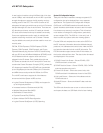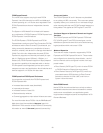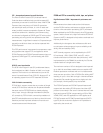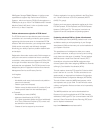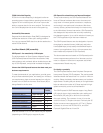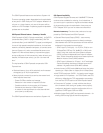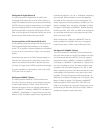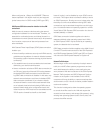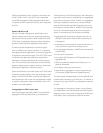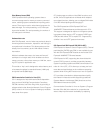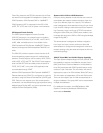The OSA-Express3 features are exclusive to System z10.
There are operating system dependencies for exploitation
of two ports in OSD mode per PCI-E adapter. Whether it is
a 2-port or a 4-port feature, only one of the ports will be
visible on a PCI-E adapter if operating system exploitation
updates are not installed.
OSA-Express3 Ethernet features – Summary of benefi ts
OSA-Express3 10 GbE LR (single mode fi ber), 10 GbE SR
(multimode fi ber), GbE LX (single mode fi ber), GbE SX
(multimode fi ber), and 1000BASE-T (copper) are designed
for use in high-speed enterprise backbones, for local area
network connectivity between campuses, to connect server
farms to System z10, and to consolidate fi le servers onto
System z10. With reduced latency, improved throughput,
and up to 96 ports of LAN connectivity, (when all are 4-port
features, 24 features per server), you can “do more with
less.”
The key benefi ts of OSA-Express3 compared to OSA-
Express2 are:
• Reduced latency (up to 45% reduction) and increased
throughput (up to 4x) for applications
• More physical connectivity to service the network and
fewer required resources:
– Fewer CHPIDs to defi ne and manage
– Reduction in the number of required I/O slots
– Possible reduction in the number of I/O drawers
– Double the port density of OSA-Express2
– A solution to the requirement for more than 48 LAN
ports (now up to 96 ports)
The OSA-Express3 features are exclusive to System z10.
OSA-Express2 availability
OSA-Express2 Gigabit Ethernet and 1000BASE-T Ethernet
continue to be available for ordering, for a limited time, if
you are not yet in a position to migrate to the latest release
of the operating system for exploitation of two ports per
PCI-E adapter and if you are not resource-constrained.
Historical summary: Functions that continue to be sup-
ported by OSA-Express3 and OSA-Express2:
• Queued Direct Input/Output (QDIO) – uses memory
queues and a signaling protocol to directly exchange
data between the OSA microprocessor and the network
software for high-speed communication.
– QDIO Layer 2 (Link layer) – for IP (IPv4, IPv6) or non-
IP (AppleTalk, DECnet, IPX, NetBIOS, or SNA) work-
loads. Using this mode the Open Systems Adapter
(OSA) is protocol-independent and Layer-3 indepen-
dent. Packet forwarding decisions are based upon the
Medium Access Control (MAC) address.
– QDIO Layer 3 (Network or IP layer) – for IP workloads.
Packet forwarding decisions are based upon the IP
address. All guests share OSA’s MAC address.
•
Jumbo frames in QDIO mode (8992 byte frame size) when
operating at 1 Gbps (fi ber or copper) and 10 Gbps (fi ber).
• 640 TCP/IP stacks per CHPID – for hosting more images
• Large send for IPv4 packets – for TCP/IP traffi c and CPU
effi ciency, offl oading the TCP segmentation processing
from the host TCP/IP stack to the OSA-Express feature
• Concurrent LIC update – to help minimize the disrup-
tion of network traffi c during an update; when properly
confi gured, designed to avoid a confi guration off or on
(applies to CHPID types OSD and OSN)
• Multiple Image Facility (MIF) and spanned channels – for
sharing OSA among logical channel subsystems



